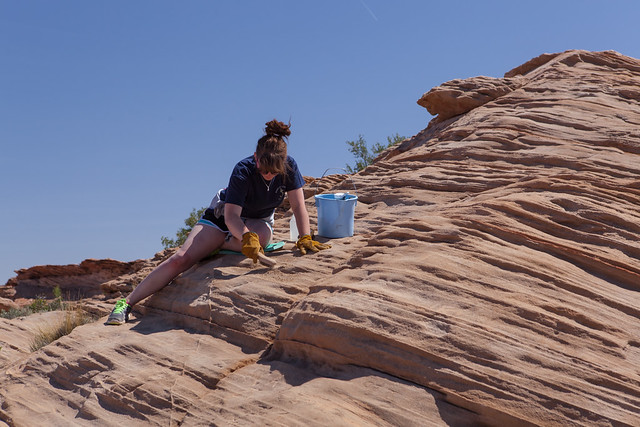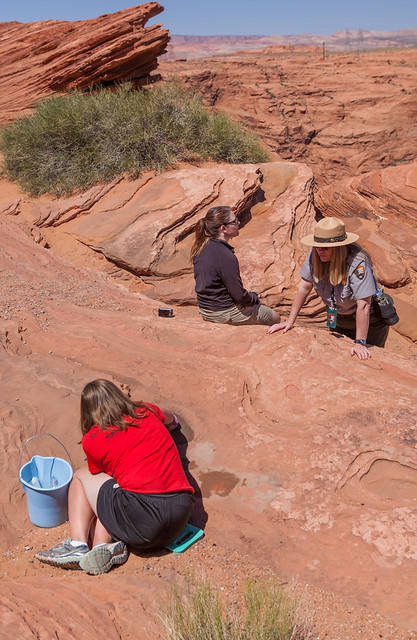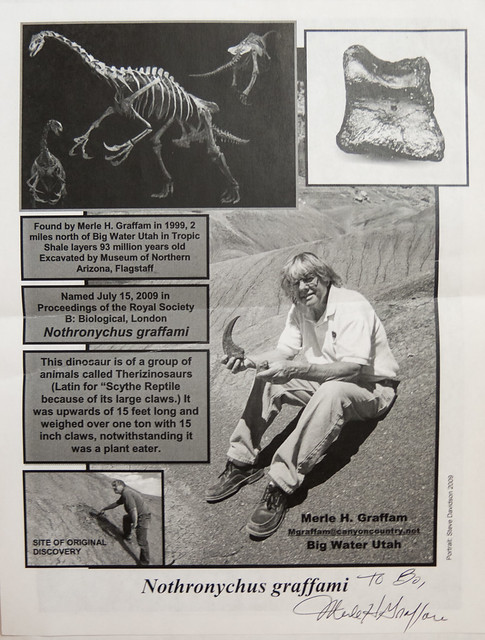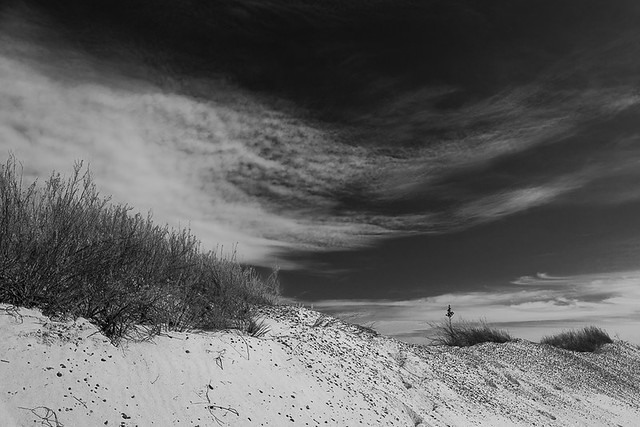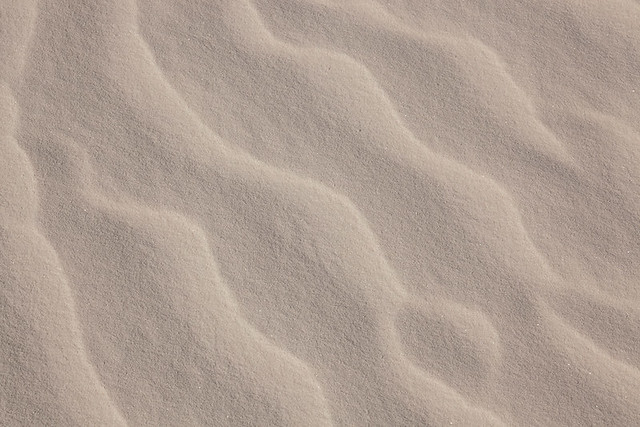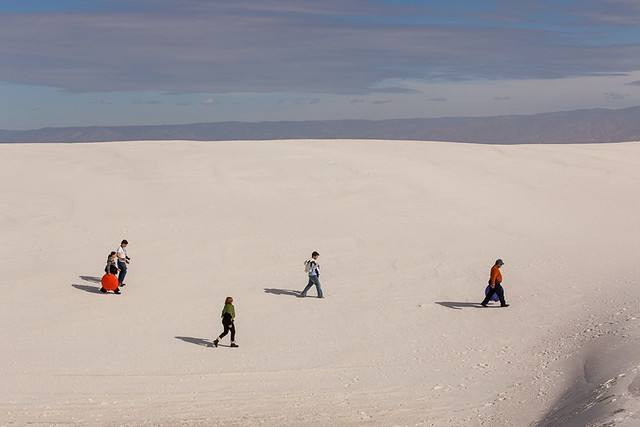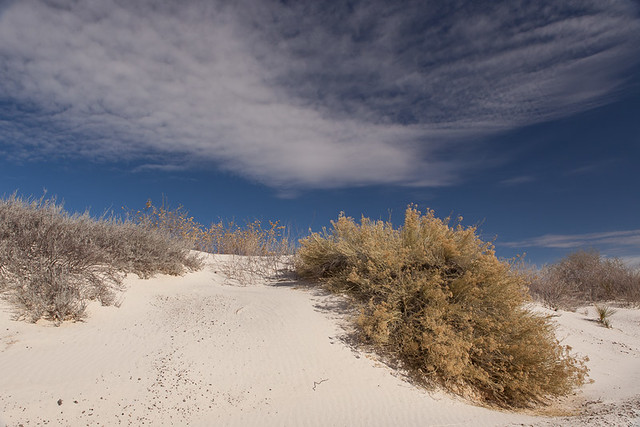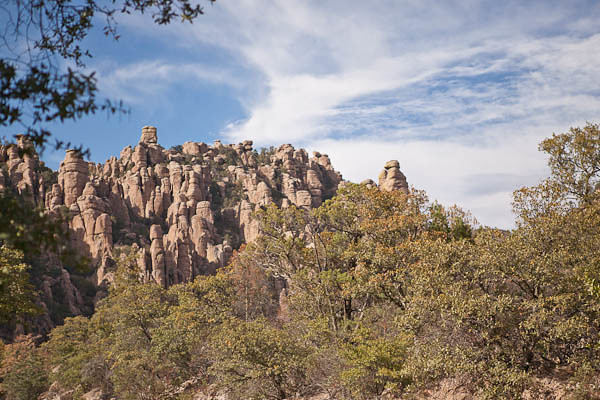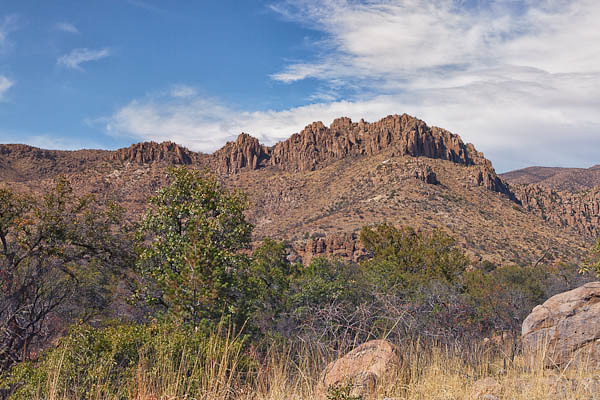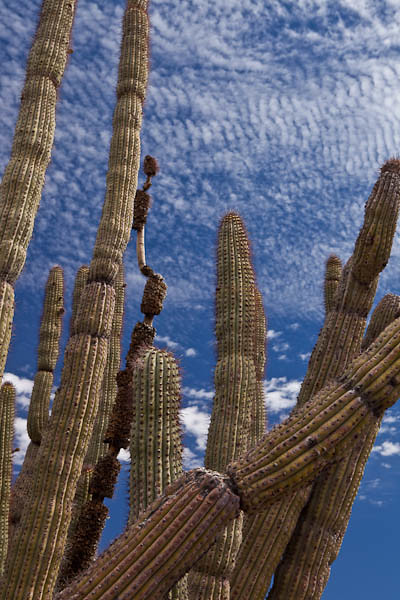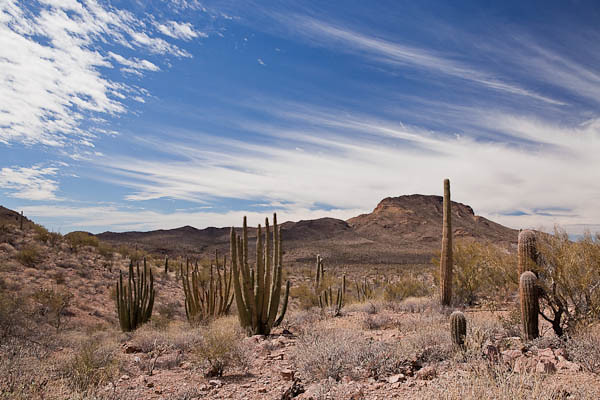Day two of bonus travel. Page, Arizona.
I take a detour on a scenic view road,
discover the Glen Canyon Dam Overlook.
On my climb down the red rock trail,
I meet three college kids hard at work,
scrub brushes in hand, cleaning graffiti from the red rock.
They tell me their story while they work.
They’re honor students from Southern Utah University
visiting Glen Canyon – hiking, exploring, and volunteering.
Logan from St. George, Sammi from Tontopah, Nevada
and Sam from Salt Lake City, all intent on cleaning the hot rock.
Logan laughs as he says, “We’re the nerdy kids, not the cool kids.”
I disagree. I think they’re the cool kids.
Hiking on the red rock towards the Colorado River,
I meet more volunteers removing streaks of
unsightly graffiti from the red rock.
Jayci from Cedar City, Alyssa from St. George,
and Damaris from Salt lake City work with Park Ranger Cynthia Sequanna.
A big thanks to these students. And to the Park Ranger, too.
I’ve discovered positive energy on these red rocks, for sure.
Revived, I get back on the road,
Kanab Utah 73 miles.
Carl Hayden Visitor Center 1 mile.
Elevation 3827 feet.
Waters of the Colorado River are backed up 185 miles
by the Glen Canyon Dam to create Lake Powell.
During prolonged droughts, released water
provides for the desert cities to the south.
Full in 1980, now the lake fluctuates near the 50% mark.
I leave Arizona, enter Utah.
Its motto – “Life Elevated.”
The rock is layered in more colors than I can imagine.
Not only reds and oranges, there’s shades of gray,
white, green, blue, yellow.
Hard to drive, there’s too much to see!
Big Water, Utah.
Rocks like chimneys, puffy clouds like smoke.
Big Water Visitor Center. Grand Staircase/Escalante National Monument.
Tiny building in the big desert, but inside are huge dinosaur specimens,
bone not plastic, from digs in the immediate area.
Adding another bonus to my bonus travel,
I have the pleasure of meeting local paleontology expert Merle Graffam.
Discoverer of the first Therizinosaurus found in the Western Hemisphere,
an entirely new dinosaur species, now scientifically known as Nothronychus Graffami.
All because he decided he needed more exercise
and thought the Utah sands would be an ideal outdoor gym.
And that claw he saw sticking out of the gray sand – yes indeed,
Graffam’s very own dinosaur.
His autograph is on the flyer, it even says “to Bo”
but Bo was so stunned by a celebrity sighting
she forgot she had her camera slung over her shoulder!


